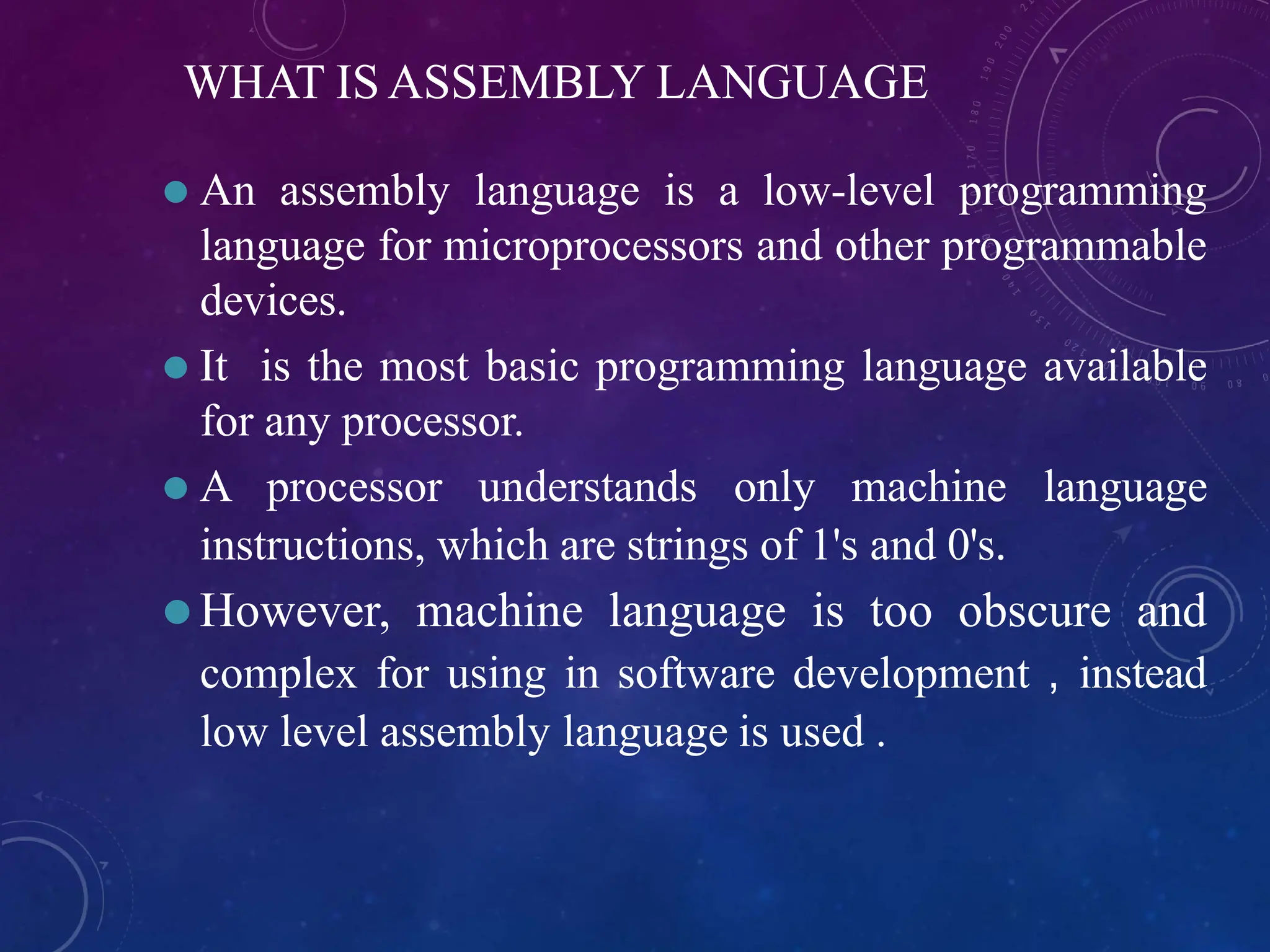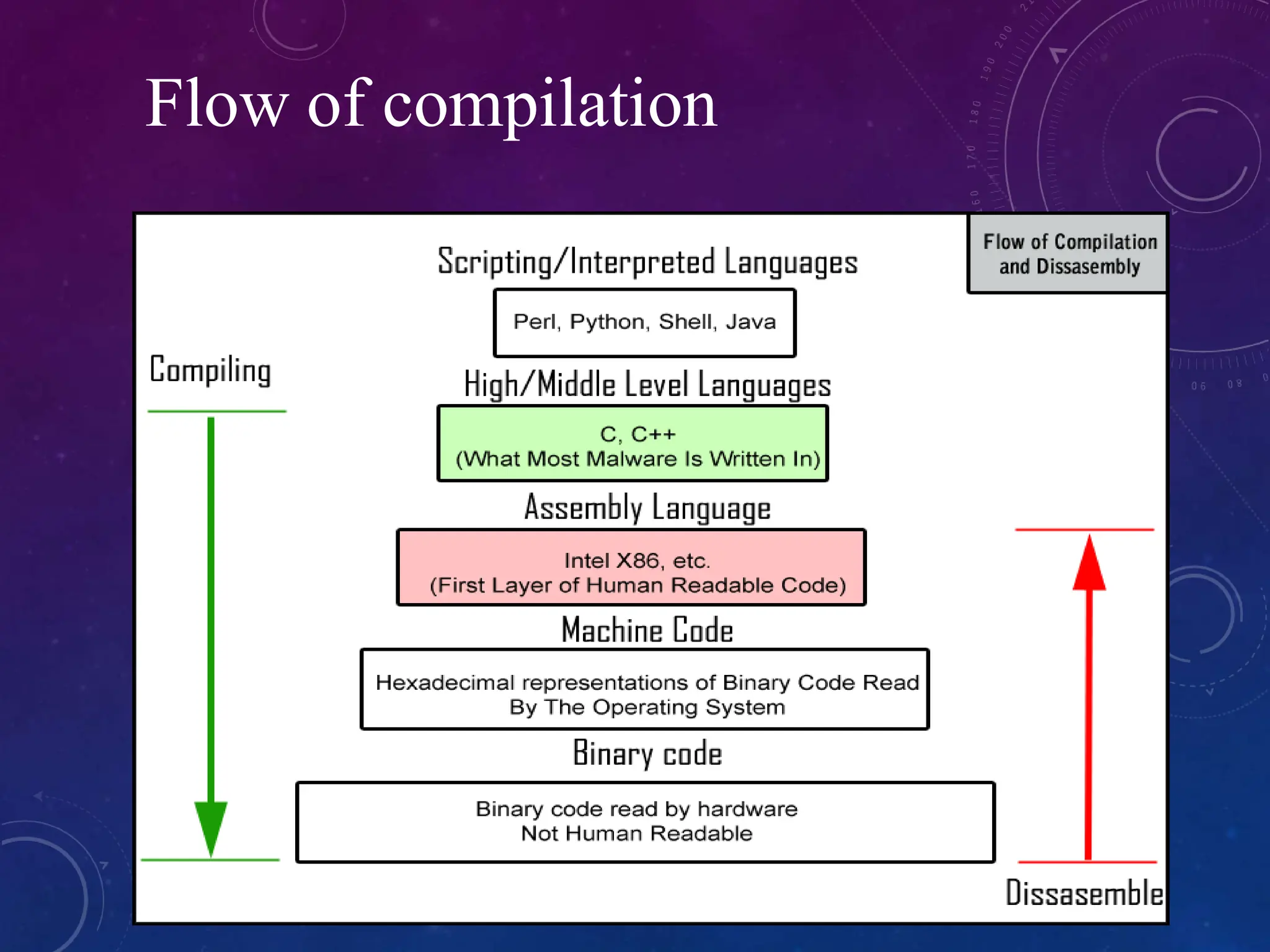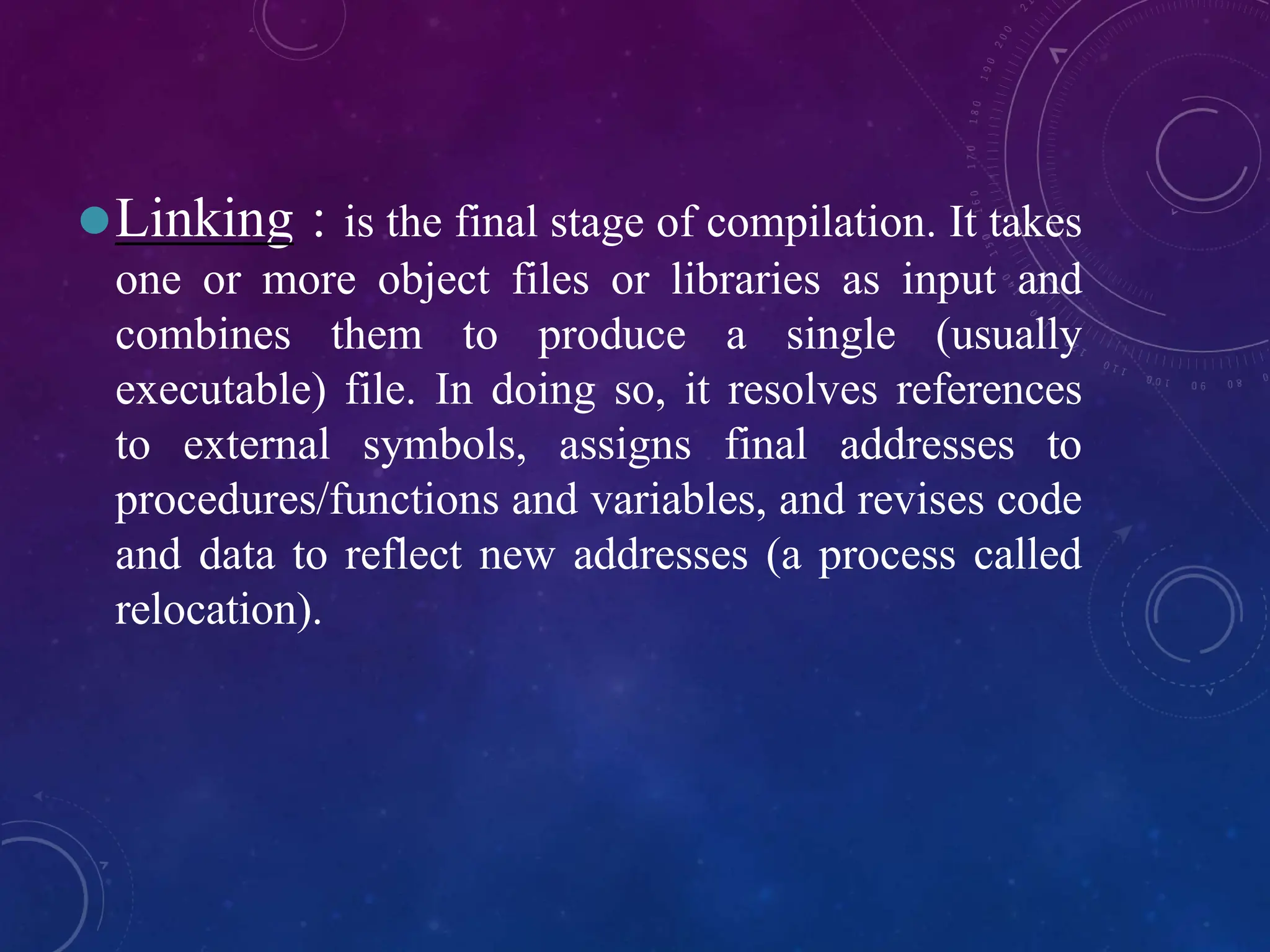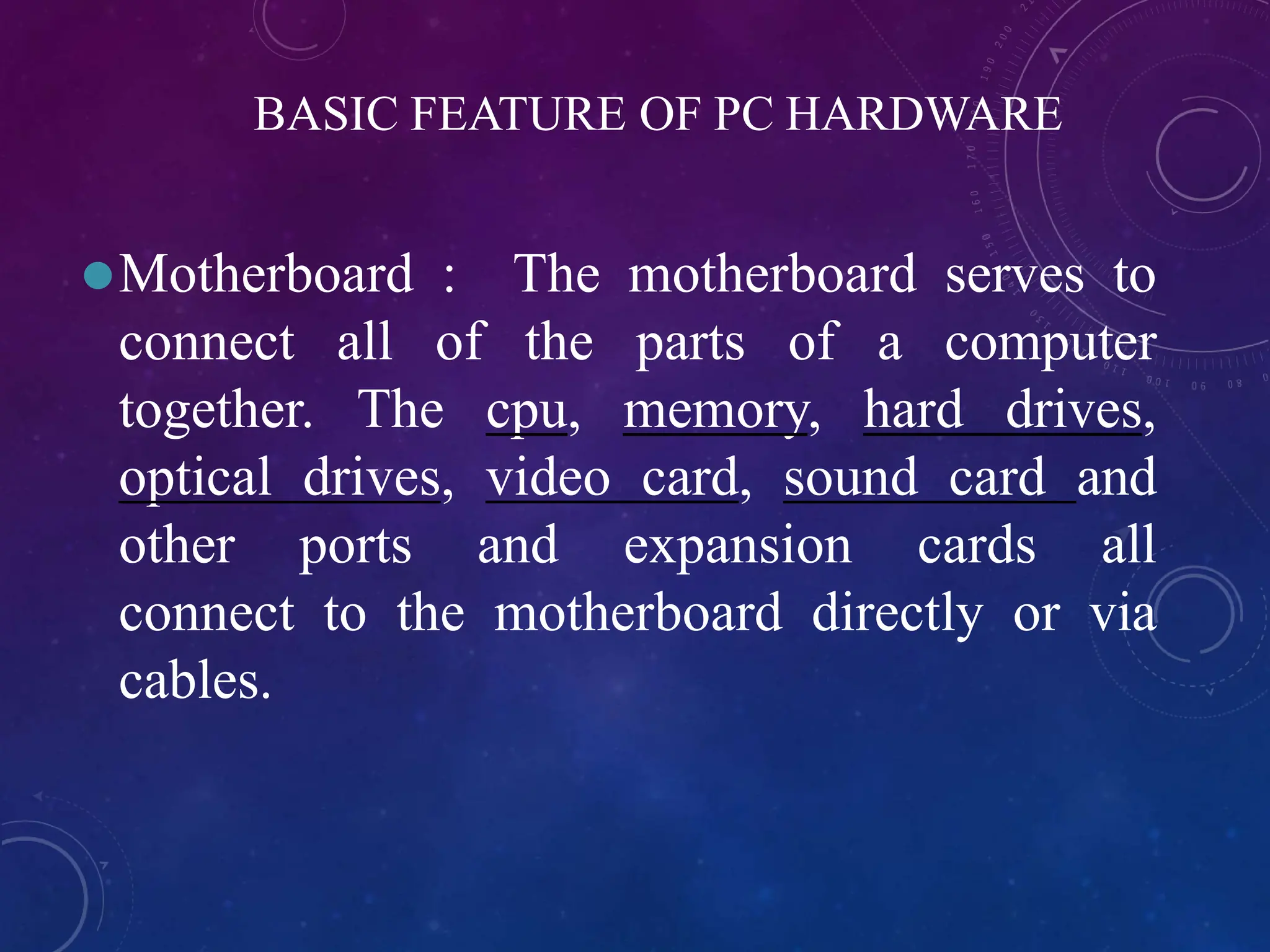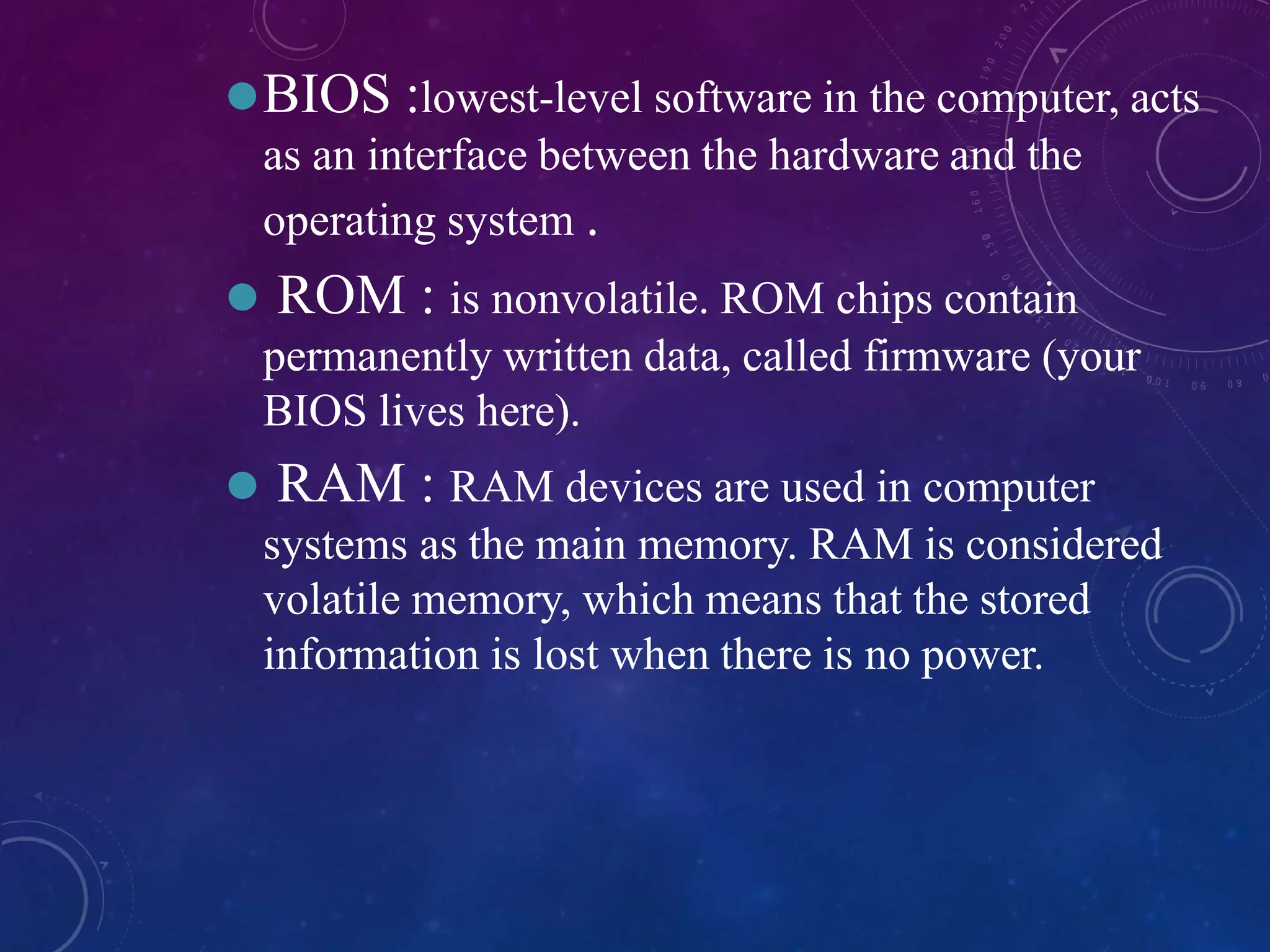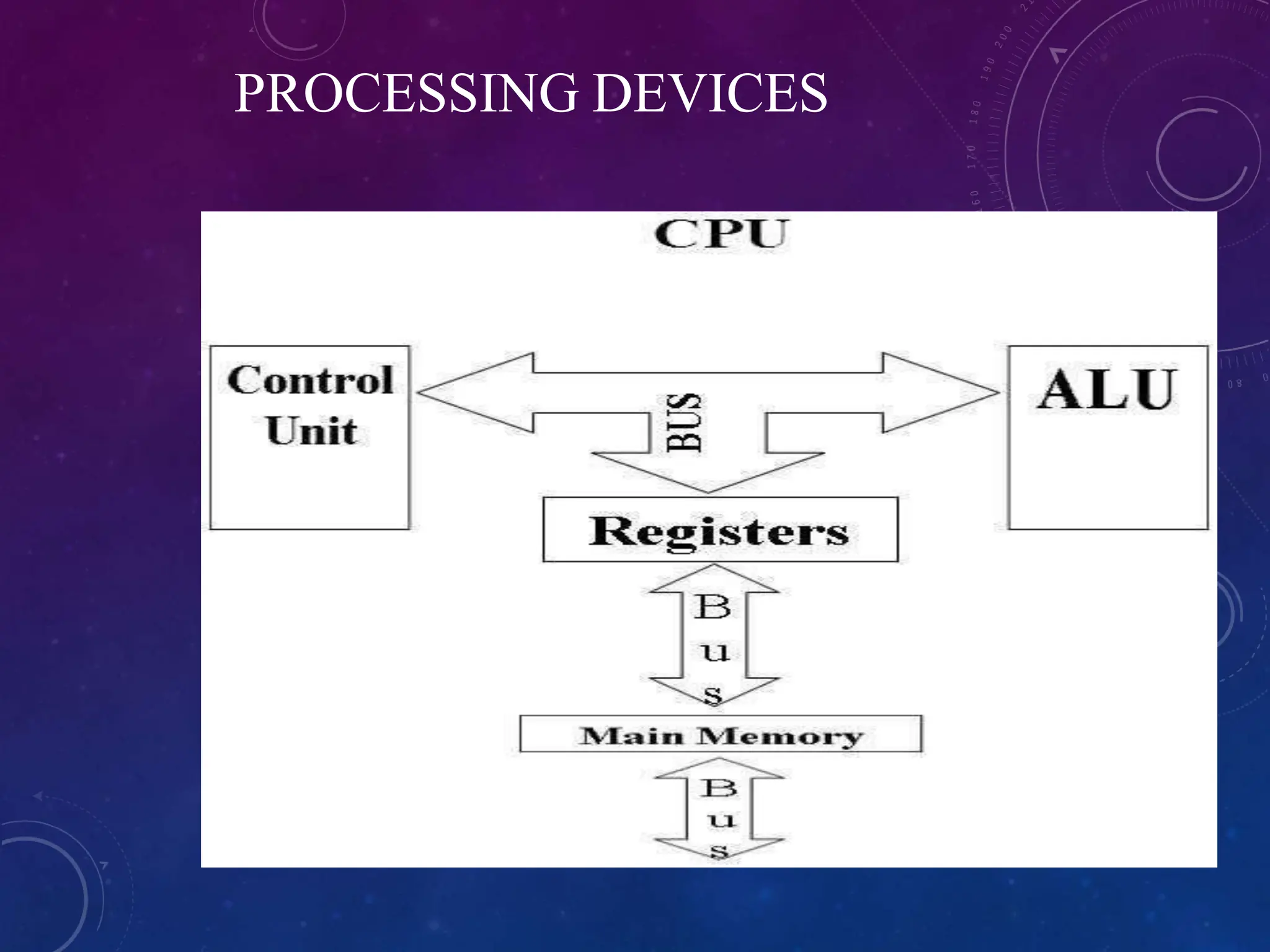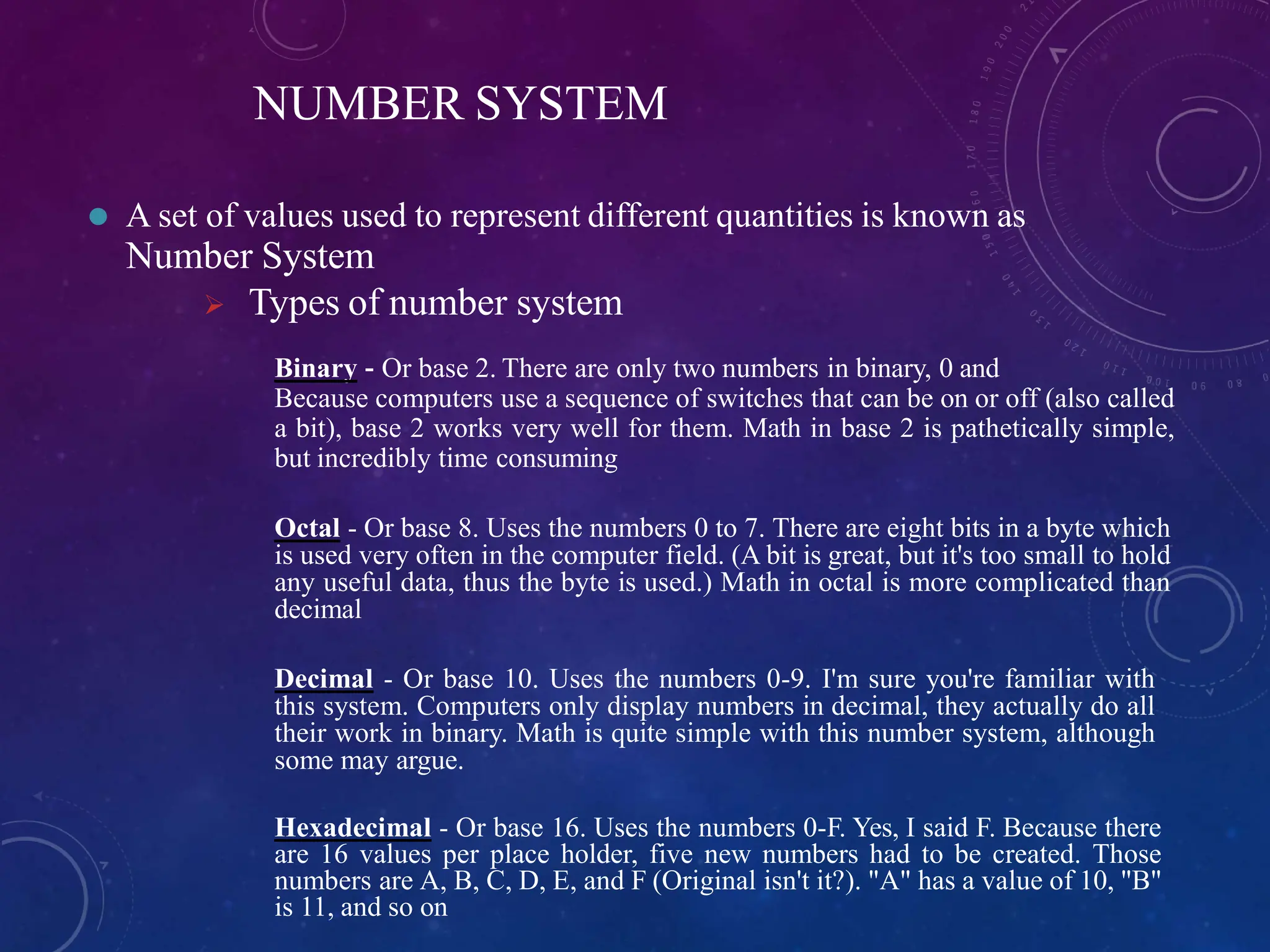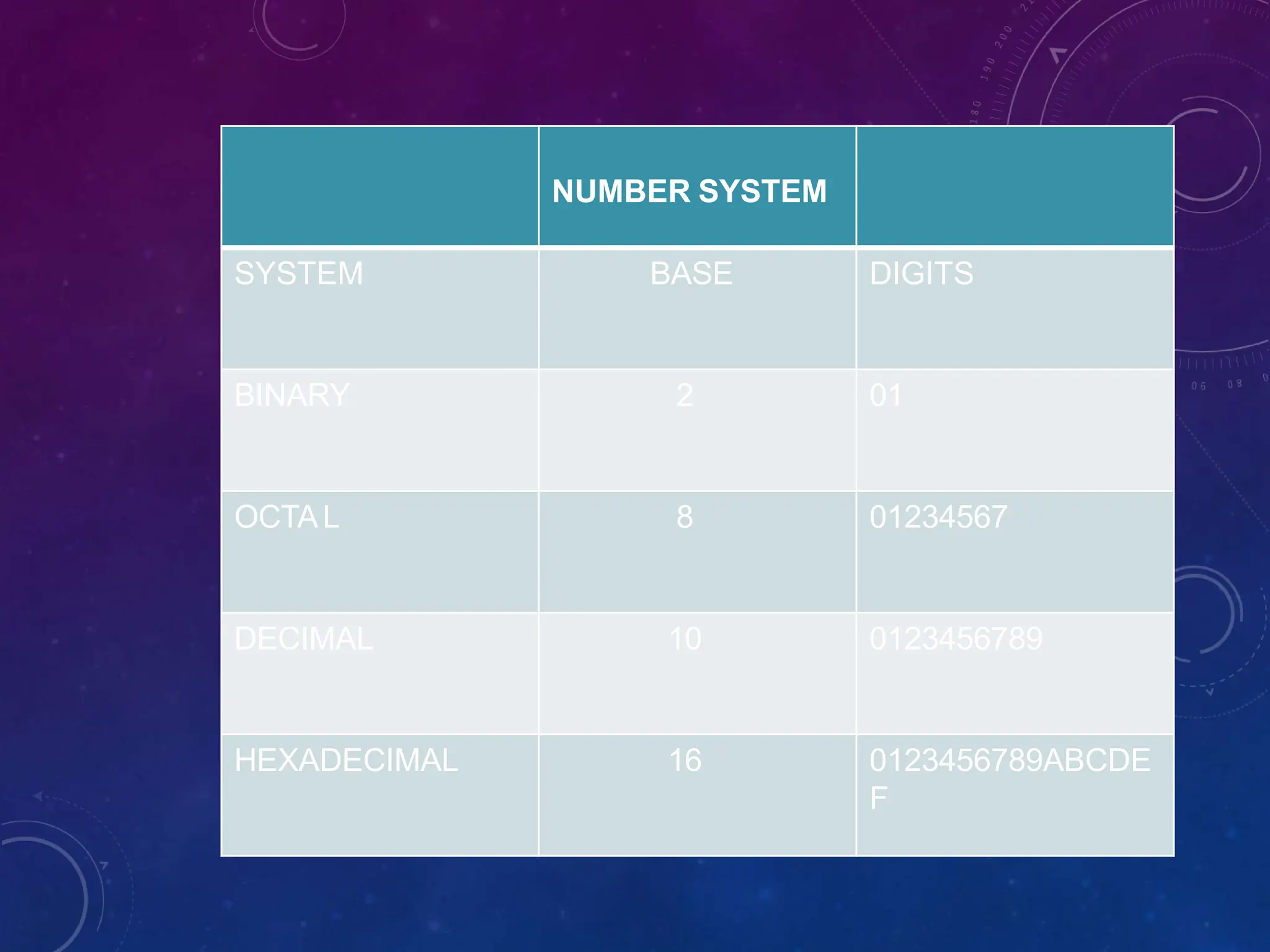This document provides an overview of assembly language and basic computer hardware components. It discusses that assembly language is a low-level programming language that is closer to machine language. The compilation process from source code to an executable involves preprocessing, compilation to assembly code, assembly, and linking. Key computer hardware components include the motherboard, BIOS, RAM, CPU components like the control unit and ALU, registers, and buses. Finally, it covers different number systems used in computing like binary, octal, decimal, and hexadecimal.

